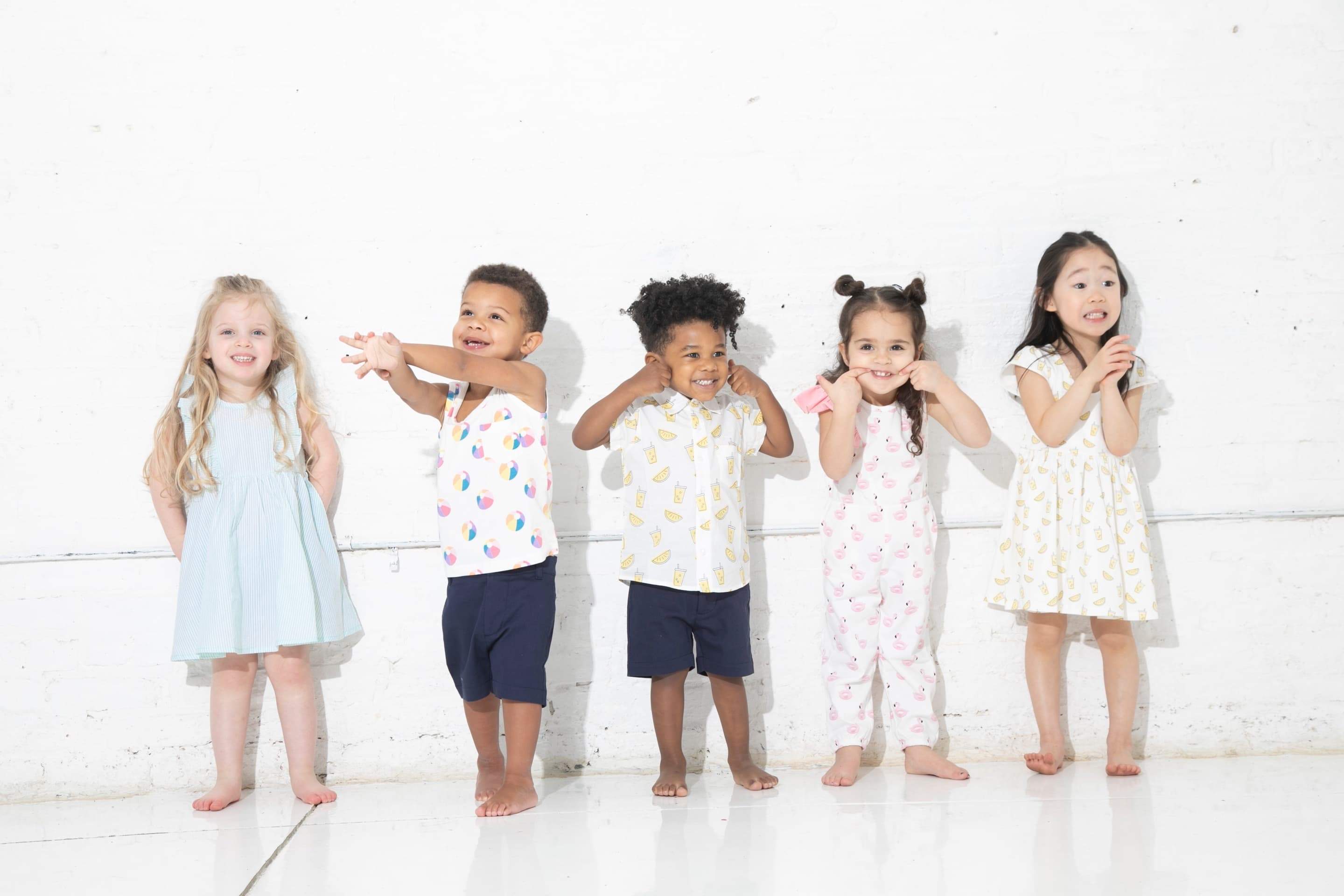How to play with baby: Newborn to Three-Months-Old

Can infants actually play? If you’ve asked yourself this question, you’re not alone. The short answer: yes!
We turned to Allison Klein, Founder of toy boutique and play resource Rose + Rex, to fill us in. Turns out, that contrary to popular belief, from the moment newborns enter the world, they begin learning through play.
“It all starts with sensory play, which is (you guessed it) play that gently stimulates baby’s senses,” Klein says. “Engaging baby in sensorial experiences helps them make important connections about their environment. This type of early play is all about exploration and laying cognitive foundations that your little one will build upon as they grow. In addition to cognitive development, playing with your infant is a valuable way to bond together and understand their perspective.”
Without further adieu, here are four ways to easily play with babies in their first three months.
Rattle Like a Rock Star
Did you know for the first three months, babies tend to focus their vision about a foot away from their face? While babies won’t be able to hold a rattle at such a young age, they’ll enjoy tracking its movements with their eyes and reaching for or swatting it away, which supports early hand-eye coordination skills. Try this activity to offer baby valuable visual stimulation: Lay babies on their back and present a rattle above them, in their sightline. Slowly move the rattle left to right, up and down to help encourage baby’s sight development and visual tracking. Eventually, rattles will become a go-to toy for sound, visual, and tactile stimulation.
Get Musical
Babies love to hear the sound of your voice—and they don’t judge if you can’t carry a tune! Singing songs to babies is soothing and helps them begin to understand rhythm and sound patterns, which set the stage for early language development. Choose simple, repetitive songs to sing. As you sing, move baby’s body, try gently clapping their hands together or bicycling their legs. This helps them connect the rhythm of your voice to physical movements.
Monochrome Colors Are In!
With young baby’s eyesight still developing, bright colors and loud patterns can be overstimulating. Opt for toys with high-contrast colors. Black and white toys help engage baby’s eyes without overwhelming them. To support independent play, look for a black and white mobile or simple image and place it about six to eight inches from their face, in their line of vision.
Stimulate The Senses
Offer baby a variety of textures—smooth, rough, hard—to feel and explore, from wooden and plant-based rubber toys to different textiles: organic cottons and linens, plush faux fur, velvet, chunky knits. Tactile exploration helps baby make sense of their new world, as touch is one of their primary senses. We adore Play Silks and scarves for this reason. The cool feel of silk is soothing to your young babe, plus Play Silks are great for a game of sensory peek-a-boo! Lay babies on their back and gently cover their face (or yours) with a play silk for a few seconds while humming or singing. Pull back the scarf with a big smile to reveal that you’re still there. This introduces babies to an important concept they’ll explore more in the upcoming months, which is object permanence.

About Allison Klein
Allison Klein is the founder of toy boutique and play resource, Rose & Rex. She received a B.A. in Anthropology with minors in Psychology and Writing from Washington University in St. Louis, and a dual M.S.ED degree in Early Childhood and Childhood Education from Bank Street College of Education. While in graduate school, Allison studied the importance of imaginative play on early childhood development, and later applied this research in pre-kindergarten classrooms where she worked. As she watched her students grow and transform through play, Allison knew she wanted to start a broad conversation about the importance of play for children in today’s results-driven culture.













